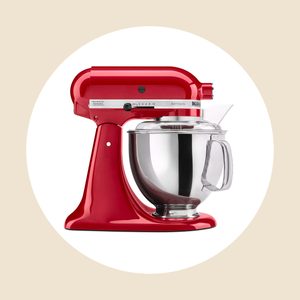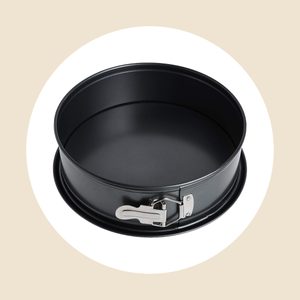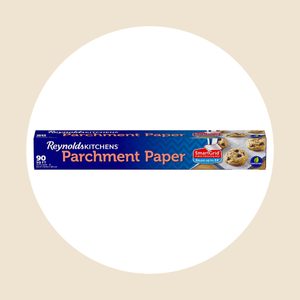How to Make Basque Cheesecake
Updated: Dec. 13, 2021
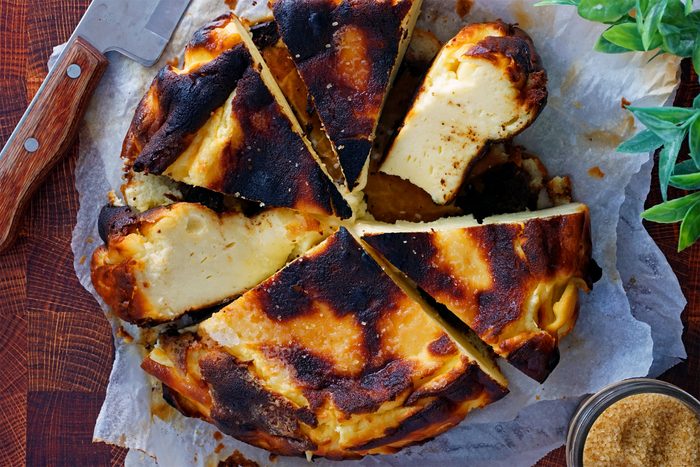
Cracked, dented and burnt to perfection, Basque cheesecake isn't your average cheesecake.
If you’re a lover of indulgent, creamy cheesecake and sweet, caramelized creme brulee, then you need to put burnt Basque cheesecake at the top of your baking bucket list.
We’ve been drooling over this unique dessert for a while now and felt it was high time that we put it to the test.
What is Burnt Basque Cheesecake?
Burnt, cracked and uneven are not typically words you’d want to use to describe a traditional cheesecake recipe. However, if you’re talking about a Basque burnt cheesecake, those are the exact attributes you’re looking for.
Originating in San Sebastian, Spain, burnt Basque cheesecake was invented by chef Santiago Rivera in 1990. While burnt cheesecake may look like a happy accident, the resulting cheesecake (cracks and all) was an intentional creation born out of countless hours of experimentation.
Today, foodies everywhere travel to La Viña to get a taste of the original burnt Basque cheesecake. If a trip to Spain isn’t in your future, you can make a wonderful homemade version of this dessert.
How to Make Basque Burnt Cheesecake
No need to mess around with a water bath. A Basque cheesecake is simply dusted with sugar before baking (essential for caramelization) and then blasted in a high-heat oven until the outside is blackened and the filling is almost completely set.
Note that a classic Basque cheesecake recipe tends to have a slightly softer, unset middle. However, if you prefer a cheesecake that’s fully set, you may bake for a few extra minutes until the desired level of doneness is reached.
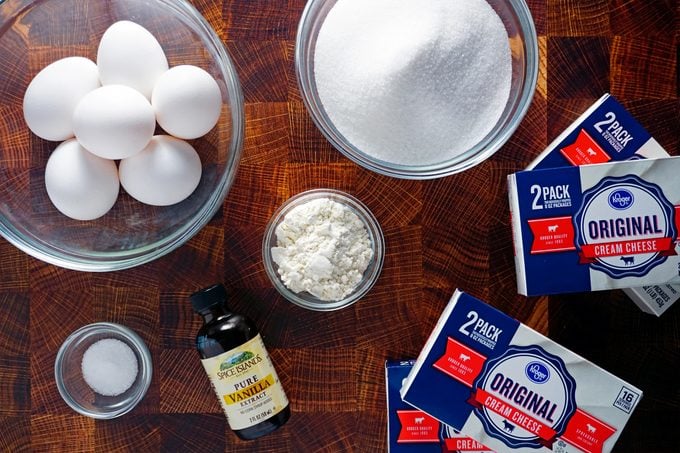
Ingredients
- 4 packages (32 ounces) cream cheese
- 1-1/2 cups sugar, plus 1 tablespoon
- 5 large eggs
- 1 egg yolk
- 1-1/4 cups heavy cream
- 1 teaspoon salt
- 2 teaspoons vanilla
- 3 tablespoons flour
Tools You’ll Need
- Stand Mixer: KitchenAid makes our Test Kitchen’s preferred stand mixer.
- Springform Pan: This sturdy springform pan makes removing the cheesecake a breeze.
- Parchment Paper: I use parchment paper for all kinds of kitchen tasks, but in this recipe, it protects the cheesecake and prevents it from sticking to the pan.
Directions
Step 1: Prep the pan
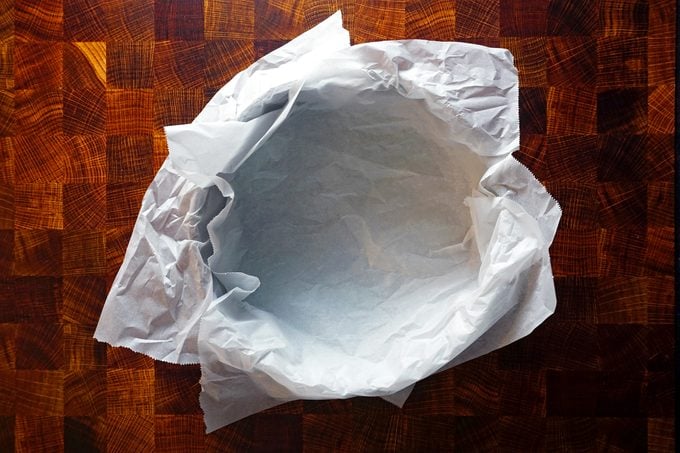
Line a 9-inch springform pan with two, overlapping pieces of parchment paper. Then, preheat your oven to 400°F. You can bake a cheesecake without a springform pan, but it will take some extra parchment.
Step 2: Beat the cream cheese and sugar
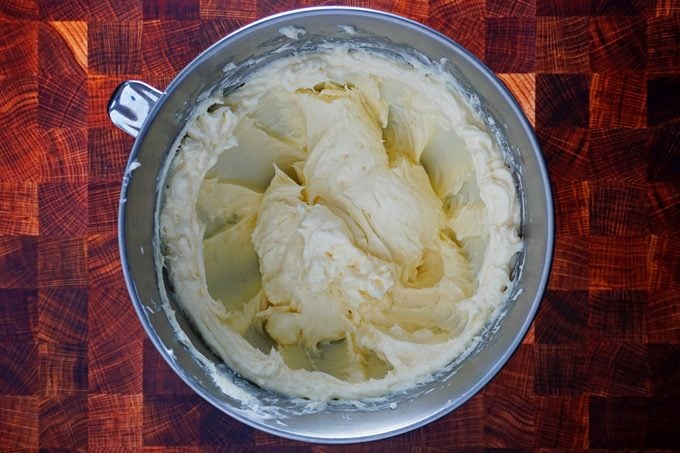
In a stand mixer fitted with a paddle attachment (or an electric hand mixer), cream together the cream cheese and sugar until the sugar is dissolved and no lumps remain.
Editor’s Tip: For the best cheesecake filling, start with cream cheese that is at room temperature. It will help your batter mix up perfectly smooth. It’s one of our cheesecake tips you don’t want to miss!
Step 3: Add the eggs
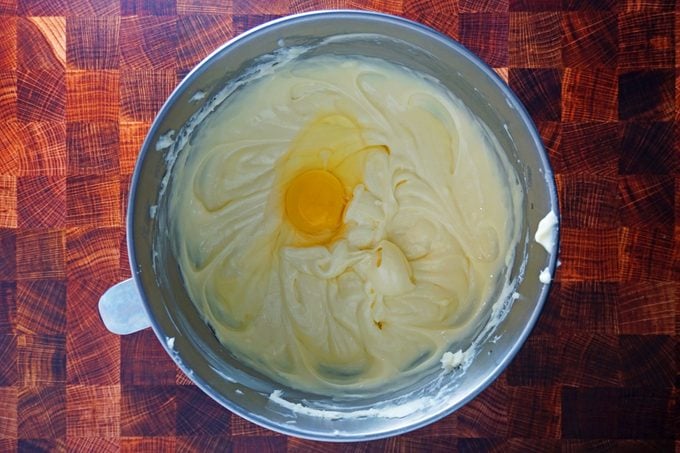
Add the egg yolk and whole eggs one at a time, beating after each addition until incorporated.
Editor’s Tip: The extra egg yolk adds extra richness to the filling and gives it a beautiful, soft golden hue.
Step 4: Finish the cheesecake filling
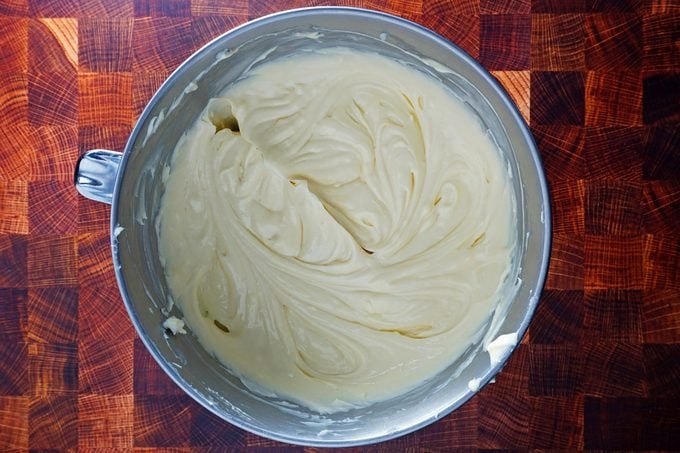
To finish the Basque cheesecake filling, beat in the heavy cream, flour, vanilla and salt. Mix at a medium-low speed until smooth, then turn off the mixer.
Transfer the filling to the prepared springform pan, spreading the mixture into an even layer. Then, generously dust the top of the cheesecake with 1 tablespoon of granulated sugar.
Step 5: Bake the cheesecake
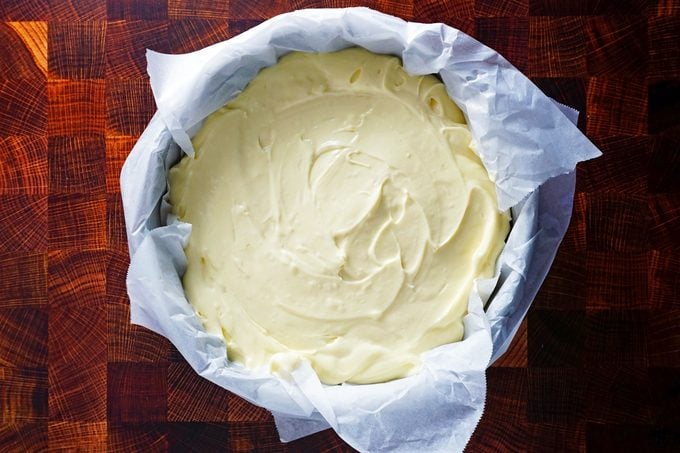
Place the cheesecake on a sheet pan and then transfer it to the preheated oven. Bake for 25-30 minutes. Then, increase the oven temperature to 450° and bake for an additional 20-25 minutes. The extra blast of high heat will help the cheesecake get that perfectly “burnt” caramelized top.
Editor’s Tip: If your cheesecake is getting too dark on top, tent the top loosely with foil. You want the cheesecake to be caramelized on top so it has a lovely toasted caramel flavor, not so severely burnt that it tastes of bitter sugar.
Step 6: Remove from the oven
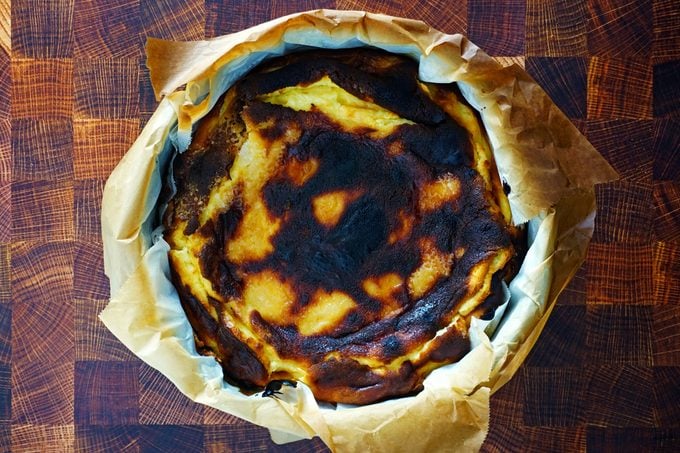
When the Basque cheesecake is fully baked, remove it from the oven and let cool completely on a wire rack, about 2 hours. Note that the cheesecake will deflate and fall considerably as it cools. Don’t freak out!
Editor’s Tip: This cheesecake is ready when the edges appear set, but the center will jiggle if you gently shake the pan. You can also test a cheesecake for doneness with an instant-read thermometer. An internal temperature of 150-155° means it’s ready.
Step 7: Remove from the pan
Unlatch the clasp of the springform pan and remove the outer ring. Gently peel back the layers of parchment and then use a sharp knife to cut into slices. Enjoy this Basque cheesecake plain or garnish with fresh berries or whipped cream. Basque cheesecake may be served at room temperature or chilled.
Here’s What I Thought
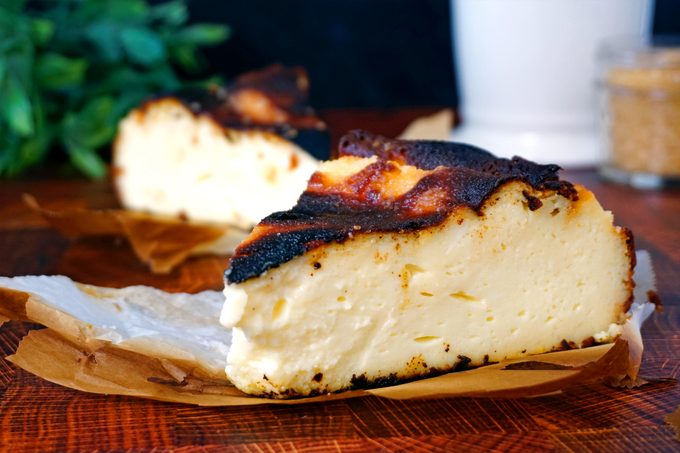
OH. EM. GEE. I died and went to…Spain. It’s safe to say that burnt cheesecake has secured a spot in our favorite desserts of all time. The filling is rich and luscious on the inside. Meanwhile, the outside has this insanely delicious toasted caramel flavor that is reminiscent of perfect creme brulee and the best toasted marshmallow you’ve ever had.
I have to be honest: I was concerned the cheesecake might taste dry, crumbly or over-baked due to the high heat and burnt appearance. But this Basque cheesecake is as creamy and decadent as any New York-style cheesecake recipe!
Beyond taste, I also enjoyed making this cheesecake because there’s no pressure to make it look perfect. It’s a great cheesecake recipe for beginners because its beauty truly lies in its imperfections. Burnt, craggy and deflated never looked (or tasted) so good!
Basque Burnt Cheesecake Variations
Like classic cheesecake, this Basque cheesecake recipe is easy to customize and make your own. Here are a few of our favorite ways to add flavor to the traditional recipe:
- Pumpkin Spice Basque Cheesecake: Reduce the heavy cream to 3/4 cup, and add 3/4 cup pumpkin puree, 2 teaspoons cinnamon, 1/2 teaspoon nutmeg, and 1/2 teaspoon ground cloves to the batter. Then bake as directed.
- Cranberry White Chocolate Basque Cheesecake: Mix in 1 cup of melted white chocolate and the zest from 1 orange into the filling. Bake as directed, then top it off with your favorite cranberry sauce when serving.
- Pecan Caramel Basque Cheesecake: Swap the regular granulated sugar for brown sugar in the filling then bake as directed. Top with homemade caramel sauce and toasted pecans before serving.
How to Store Basque Cheesecake
Store this cheesecake in the refrigerator for up to 5 days. You may also store cheesecake in the freezer (whole or individual slices), tightly wrapped in plastic and a layer of foil for up to 3 months. Defrost overnight in the refrigerator before serving.
Love cheesecake? Check out our Ultimate Guide for Baking Cheesecake!

